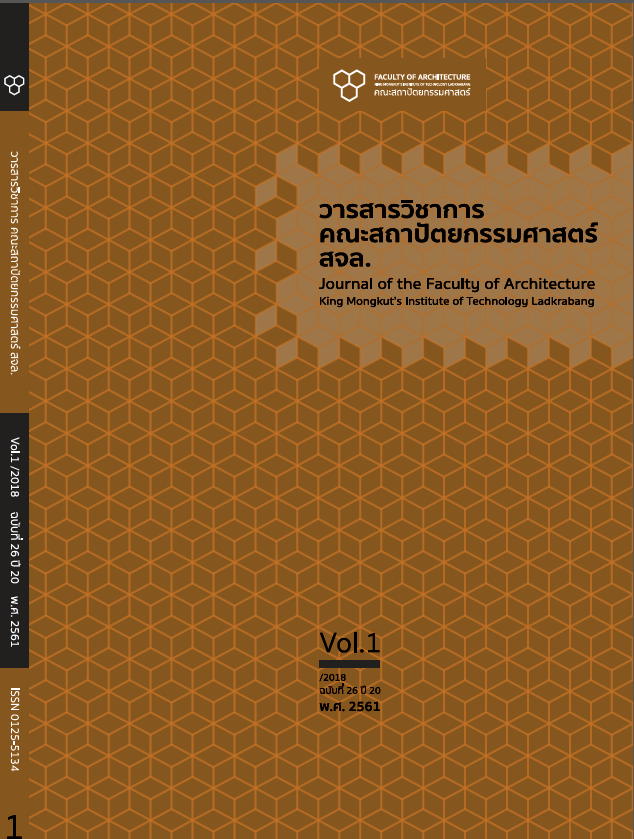การบูรณาการด้านออกแบบเชิงกลยุทธ์: กรณีศึกษาธุรกิจของตรา “เอสแอนด์พี”Integration in Strategic Design: A Case Study of “S&P” Brand Business
Main Article Content
Abstract
Abstract
Business required new ideas and strategies all the time or it incurs the risks in sustainable existence.At the same time, design academic faces another threat: lacking on linkage between academic and professional
practice outside the classroom. Integrating the design academic with the industrial practice is a good method that solves both problems. This applied research was partially funded by S&P Syndicate Public Company
Limited who acted as collaborated partner in this academic integration. The research objectives are as follows: 1) to study the main points of the S&P Syndicate Public Company Limited 2) to identify the design
problems and 3) to develop strategies and products for S&P Brand. This research was conducted in 8 steps, with emphasis on studying and analyzing the company’s background; executive’s aims; customers; markets
and trends; identifying the design problems; and developing the new strategies and product opportunities for S&P brand. The results included 1) new product strategies that lead to 2) identifying the main design problem resulting from analyzing of three issues: “in what ways could S&P being loved by people in this generation and the next?”; company’s three key business principles: Quality, Value and Virtue; and the key slogan “S&P Simply Delicious”. The main design problem was then divided into five most potential sub-themes, resulting in 3) five design strategies and product outcomes that were demonstrated in the forms of concepts; strategic proposals; and final designs. When the design outcomes were presented to the executives from S&P and the external committees, they were received with favorable responses. In conclusion, this integration of academic and business in strategic design helped developing the students’ skills; opened up an opportunity for S&P to help shaping the more qualified graduates; at the same time S&P could get inspirations that benefitted to its business. This kind of collaboration had both positive aspects and obstacles that needed to be further considered and solved.
Keywords: Strategic Design, Integrated Design, New Product Strategies, Design Collaboration, S&P
Article Details
This work is licensed under a Creative Commons Attribution-NonCommercial-ShareAlike 4.0 International License.
Copyright Transfer Statement
The copyright of this article is transferred to Journal of The Faculty of Architecture King Mongkut's Institute of Technology Ladkrabang with effect if and when the article is accepted for publication. The copyright transfer covers the exclusive right to reproduce and distribute the article, including reprints, translations, photographic reproductions, electronic form (offline, online) or any other reproductions of similar nature.
The author warrants that this contribution is original and that he/she has full power to make this grant. The author signs for and accepts responsibility for releasing this material on behalf of any and all co-authors.
References
กมลวรรณ ยงพาณิชย์, ชนิกานต์ ปิ่นแก้ว, ณัฐฌิมา วิจิตรแสงกุล และนันทวรรณ พรมั่น. (2560). รายงานและบันทึกการทำงาน “ชื่อนี้มีแต่ความสุข”. กรุงเทพฯ: คณะสถาปัตยกรรมศาสตร์, สถาบันเทคโนโลยีพระจอมเกล้าเจ้า
คุณทหารลาดกระบัง.
กำธร ศิลาอ่อน. (18 ธันวาคม 2560). สัมภาษณ์โดย สมพิศ ฟูสกุล. ความคิดเห็นต่อผลงานออกแบบสร้างสรรค์กลยุทธ์ที่นำเสนอต่อเอสแอนด์พี ซินดิเคท. อาคารเรียนรวม สถาบันเทคโนโลยีพระจอมเกล้าเจ้าคุณทหารลาดกระบัง.
ณัฐฑิตา สิทธานุกูล, สุธาวี บูณย์ประเสริฐกุลและสุทธิดา จันทกล. (2560). รายงานและบันทึกการทำงาน “ชื่อนี้มีแต่ความใส่ใจ”. กรุงเทพฯ: คณะสถาปัตยกรรมศาสตร์, สถาบันเทคโนโลยีพระจอมเกล้าเจ้าคุณทหารลาดกระบัง.
ปภาดา บุตรศรี, วิชญ์พล เมืองคุ้ม และสิรภพ นิลบดี. (2560). รายงานและบันทึกการทำงาน “ชื่อนี้มีแต่ความสะดวก”.กรุงเทพฯ: คณะสถาปัตยกรรมศาสตร์, สถาบันเทคโนโลยีพระจอมเกล้าเจ้าคุณทหารลาดกระบัง.
ประชาชาติธุรกิจออนไลน์. (2553). ‘S&P’ สลัดภาพเดิมรีแบรนดิ้งใหญ่ ปรับสู่ ‘อินเตอร์ฯคาเฟ่’ ผุดร้านอาหารญี่ปุ่นปีหน้า. เข้าถึงได้จาก: https://www.prachachat.net/news_detail.php?newsid=1287576616.
ประเวศวุฒิ ไรวา. (18 ธันวาคม 2560). สัมภาษณ์โดย สมพิศ ฟูสกุล. ความคิดเห็นต่อผลงานออกแบบสร้างสรรค์กลยุทธ์ที่นำเสนอต่อเอสแอนด์พี ซินดิเคท. อาคารเรียนรวม สถาบันเทคโนโลยีพระจอมเกล้าเจ้าคุณทหาร
ลาดกระบัง.
รัมม์รดา ตั้งวีระเกียรติ วราลี ปีศรี และอรวรรณ กอเสรีกุล. (2560). รายงานและบันทึกการทำงาน “ชื่อนี้มีแต่ความรอยยิ้ม”. กรุงเทพฯ: คณะสถาปัตยกรรมศาสตร์, สถาบันเทคโนโลยีพระจอมเกล้าเจ้าคุณทหารลาดกระบัง.
วนิดา คลังกำแหงเดช. (2560). การนำเสนอผลงานออกแบบสุดท้ายของคณะทำงาน. [ภาพถ่าย]. กรุงเทพฯ: คณะสถาปัตยกรรมศาสตร์, สถาบันเทคโนโลยีพระจอมเกล้าเจ้าคุณทหารลาดกระบัง.
เอส แอนด์ พี ซินดิเคท. (2559). รายงานประจำปี 2559. เข้าถึงได้จาก: http://sandp.listedcompany.com/misc/AR/20170331-sandp-ar2016-th.pdf.
Science|Business Innovation Board AISBL. (2012). MAKING INDUSTRY-UNIVERSITY PARTNERSHIPS WORK Lessons from Successful Collaborations. Belgiam: Science|Business Innovation Board AISBL.
Verwulgen, S., Goethijn, F. and Vankerkhoven, V. (2013). Collaboration between Industrial Design Students and Industry: Sharing of Knowledge and Intellectual Property. In J. Lawlor, G. Reilly, R. Simpson,
M. Ring, A. Kovacevic, M. McGrath, W. Ion, D. Tormey, E. Bohemia, C. McMahon and B. Parkinson (Eds.), Design Education, Growing Our Future: Proceedings of E&PDE 2013, the 15th International
Conference on Engineering and Product Design Education. pp. 518-523). Glasgow: The Design Society.


